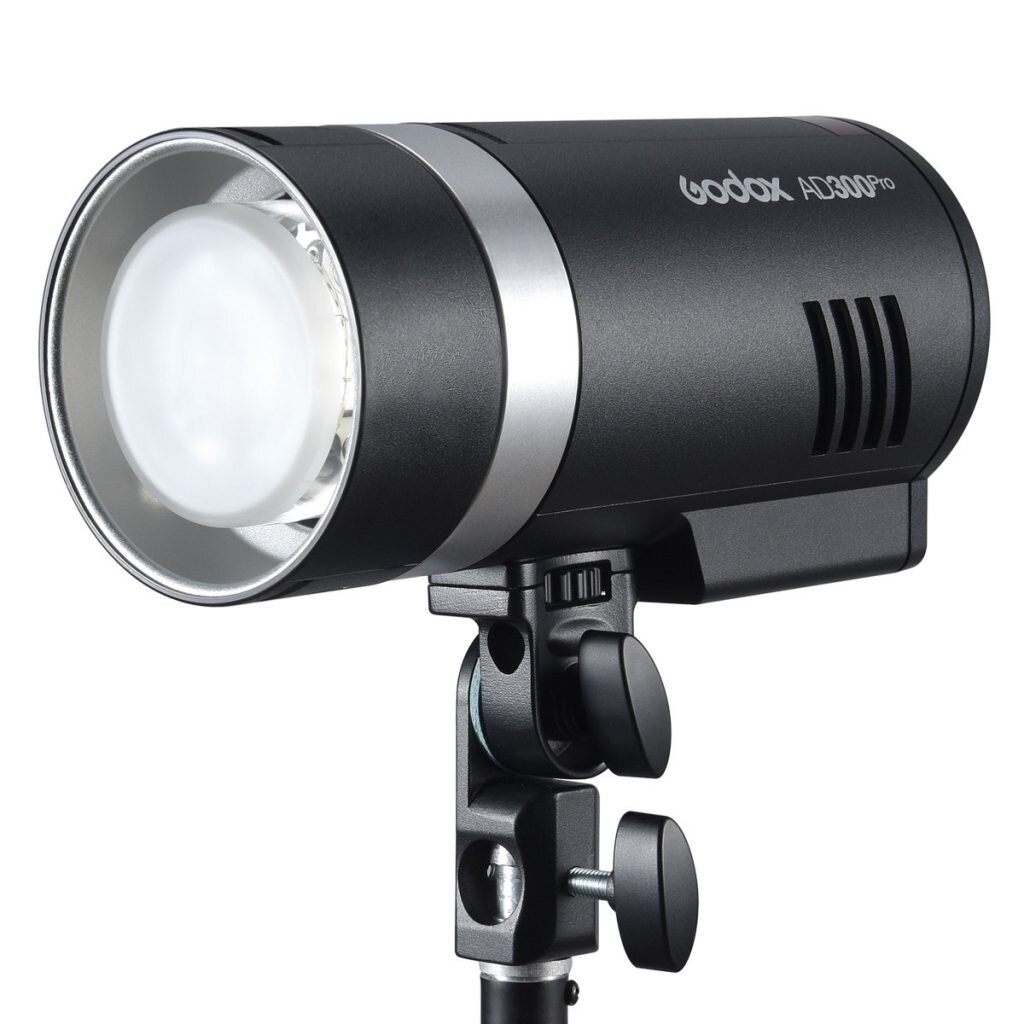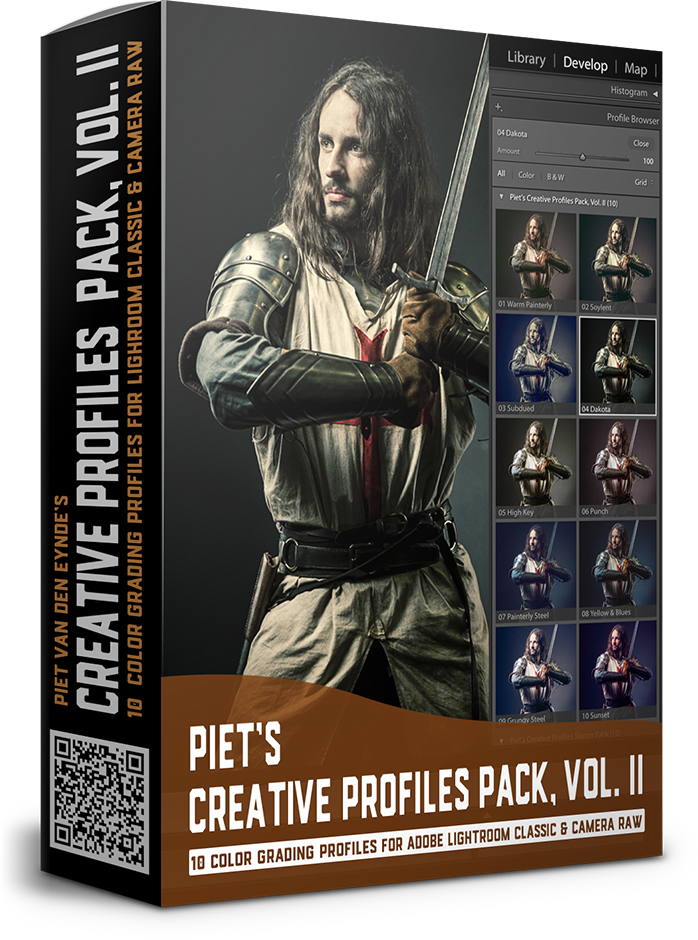A few weeks ago, I had my first post-Corona shoot. With how things are looking Corona-wise, it may very well have been my last shoot for a while, too. The aim was to test the new Godox AD300 Pro and AD1200 Pro and make a video about it for Disnet, the Benelux importer of Godox and other cool lighting gear such as SMDV. After months of inactivity, I was quite nervous. I had arranged – thanks Bruno! – to meet up near the Brussels Congress Column with Nabil and Shana, two dancers from Brussels. Below you can see the flashes - and the dancers - in action in the behind-the-scenes video that photographer and filmmaker Bruno Maes made. The camera I used was my trusted GFX 100.
AD1200 Pro
What can I say? This thing is a monster! Even after four hours of shooting, the battery was still at two thirds! The fact that you have 1200 Ws at your fingertips gives you an incredible amount of creative freedom. Below you will find the main specifications of this powerhouse.
5 groups & 32 channels
High Speed Sync support up to 1 / 8000th of a second
Optical slave modes
Normal color temperature mode: 5600 K ± 200 K
Stable color temperature mode: 5600 K ± 75 ° K
Powerful 40W LED pilot light
Bowens mount
3,5 meter power cable
Weight: 8.25 kg including flash head, battery and cable
1200 Ws
fan-cooled head
0,01 - 1,9 seconden recycle time
interchangeable 5200 mAh lithium-ion battery. An optional 2600 mAh battery is available if you want to bring the AD1200 Pro along on a plane (the standard battery is too powerful to bring on a plane)
Power manually adjustable from 1:1 to 1:256
TTL / M / Multi
Second curtain sync, front curtain sync
By the way, AD1200 Pro is not the only Godox solution to use 1200 Ws of power on location. Until now, I used two AD600 flashes with the optional H1200B head. In terms of price, you are close to the AD1200 Pro with this combination. The solution with the H1200B head offers the advantage that you are more flexible because you can also use the two flashes separately in a setup with a main light and a kicker light. However, if you often want to shoot at full power, the AD1200 Pro is more convenient to use and moreover it’s a full second faster in terms of recycling time. It’s also more practical to work with one battery pack than with two AD600 flashes that you stuff in a camera bag: with the H1200B and double AD600 combo, it occasionally happened that one of the units in my bag accidentally got into sleep mode (or ran out of power) and that I was actually only working at half power without realizing it.
The AD1200 Pro has a RRP of € 1,699 including VAT. The only alternative known to me is the Elinchrom ELB 1200, but it costs about double that including flash head.
But you shouldn't buy the AD1200 Pro just for its maximum power. Recycle time and battery life can also be an important factor. The full power recycle time is just under two seconds, but that obviously decreases the less power you need, while the battery lasts longer. The AD1200 Pro comes with a roller case that is very similar in concept to the ThinkTank Airport TakeOff: it can be converted into a backpack if necessary via the two carrying straps hidden in the back panel. With some rearranging, there is even room in the trolley for an AD300 Pro, which immediately brings me to the next flash I used on this shoot.
AD300 Pro
As the new top-of-the-bill in the Godox range, the AD1200 Pro is of course somewhat more of a niche product. Although… It apparently sells so well that it is sold out at most Belgian and Dutch retailers. The AD300 Pro on the other hand has everything to become a real best-seller. It is very compact because it comes standard with Godox's own mount and not with the more popular but larger Bowens mount. However, with the new S2 adapter you can easily make it Bowens-compatible. If you’re looking for a more permanent solution, then there is also an adapter that you screw onto the AD300 Pro. This adapter exists in a Bowens, Profoto, Elinchrom and Broncolor version. Handy if you already have numerous light modifiers for one of those brands.
Because of its compact shape, the AD300 Pro is easy to stow away in a camera bag. The battery allows for more than 300 full power flashes and you can even use AD200 & AD200 Pro batteries in it. The AD300 Pro is not only suitable for portrait photography, I recently used it to take real estate photos. I used to use hotshoe flashes like the V860 II for that, but at almost four times the power, the AD300 Pro lets me work faster, and also makes it easier to use bounce and indirect flash to evenly illuminate a large space. Also handy is the LED pilot light whose color temperature is adjustable between 3000 and 6000 Kelvin.
The ideal travel flash?
Thanks to its compact shape, the AD300 Pro seems to be the ideal travel flash when you want a bit more power than a standard hotshoe flash. In combination with an S65 or S85 Godox Softbox that use the compact Godox Mount, you have a compact mini-studio for a total weight of about two kilos. Personally, I still prefer the twice as powerful, but also much larger and heavier AD600 when traveling. That's partly because I like using even bigger softboxes - and the larger the softbox, the more powerful your light needs to be. However, it is mainly because I teach at travel workshops and I need the extra battery capacity of the AD600 for my students. Also, I normally work with Fujifilm's GFX camera line. These have a sync speed of only 1/125th compared to the 1/250th of most other cameras (for example, the X-T4).
The sync speed has an impact on how powerful your flash must be to make a certain photo. For example, with my X-T4, I can work at 1/250th, ISO 100, f/8. To get the same background exposure, I have to work with my GFX on 1/125th and use f/11. However, that aperture only lets in half the amount of flash light compared to f/8. So I have to use a twice as powerful flash to take the same picture with the GFX as with the X-T4. The slower sync speed is basically costing me a stop of flash power that I need to compensate for by using a more powerful flash. Using HSS is possible, but involves a loss of efficiency, so it is not a solution from an efficiency standpoint.
The 'sync speed problem' arises especially when photographing with flash during the day, in full sun, but that's exactly the time of day I want to use flash, to balance the sun. Moral of the story: with an AD300 Pro and a camera with a 'normal' synchro speed of 1/250th second, you can do quite a lot.
I think Godox have a real winner on their hands with the AD300 Pro.
Normal color temperature range: 5600 K ± 200 K
Stable color temperature mode: 5600 K ± 100 ° K
Bi-color LED pilot light (3000 K - 6000 K)
Godox mount. Optional Bowens, Profoto, Elinchrom & Broncolor adapters available
USB Type C port for firmware upgrades
3,5 mm sync port for manual sync
Dimensions: 19 x 9,8 x 8,7cm
Weight: 1,4 kg including battery
300 Ws
0,01 - 1,5 second recycle time
interchangeable 14,4 V / 2600 mAh lithium-ion battery. The AD300 Pro also can use AD200 and AD200 Pro batteries.
Manual power range from full power to 1:256
TTL / M / Multi
Rear curtain sync & front curtain sync
5 groups & 32 channels
High Speed Sync support up to 1 / 8000th of a second
Optical slave mode
Compatibility
As I have been saying for a few years now, the reason why I use Godox is not only their good value for money but especially because Godox offers a complete eco-system where all flashes, from the tiny TT350 to the 30 times heavier (literally and figuratively) ) AD1200 Pro are mutually compatible and work seamlessly and wirelessly. Moreover, Godox has the widest camera compatibility in the market: there are transmitters for Nikon, Canon, Fujifilm, Olympus / Panasonic, Sony and even Pentax! Only Leica users don’t have a dedicated trigger but if they swear by the available light anyway :-)
Resources:
If you want to get better at off-camera flash, have a look at my PDF ebook Pushing Light: at 200 pages, it teaches you all you need to know to work with flash on location. The deluxe edition comes with three bonus videos and 5 bonus Lightroom presets and is available here for only USD 34.95
The color grading of the images in the video was done with my latest Creative Profiles pack for Lightroom Classic, ACR & Photoshop. It’s available here.



